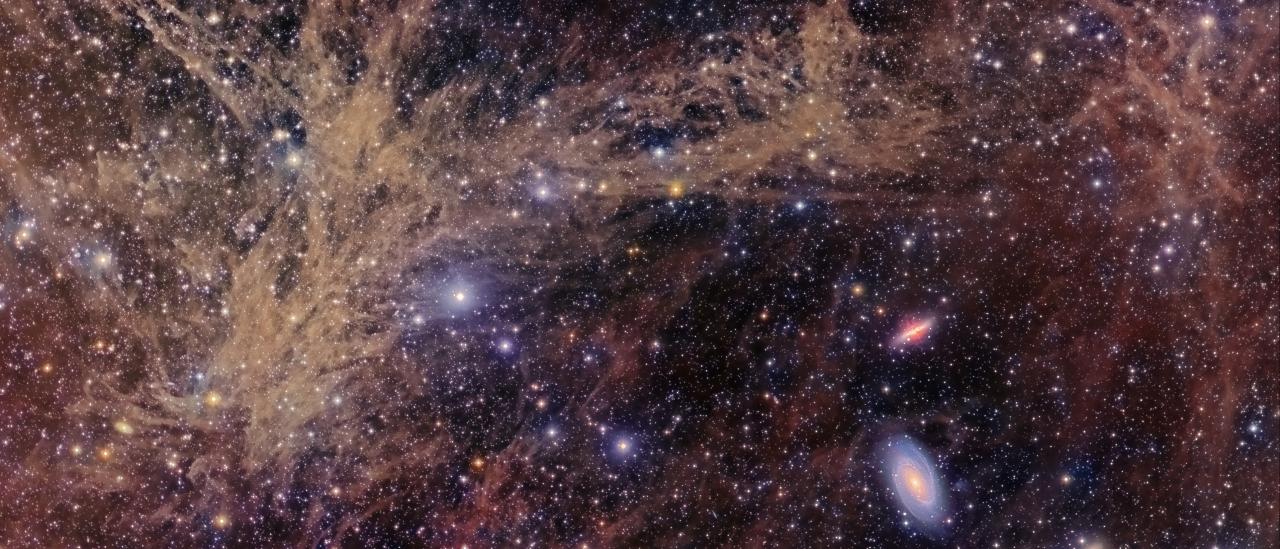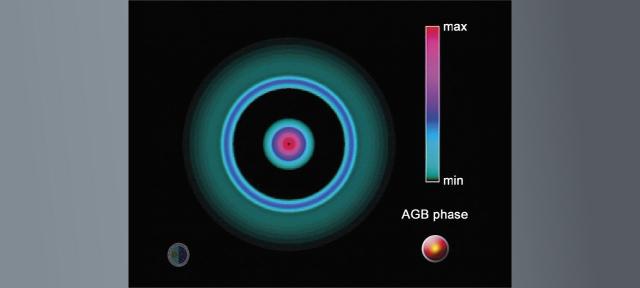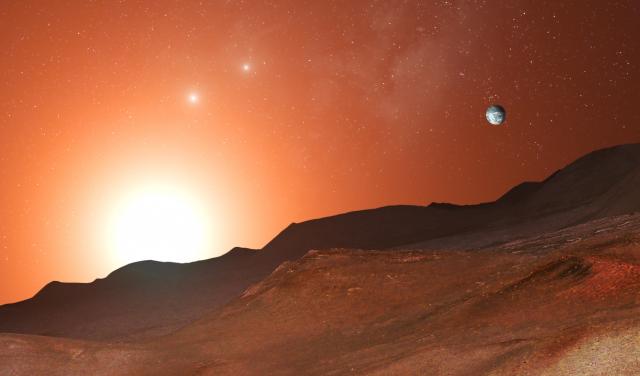The different groups of galaxies that make up the Universe are classified into various categories according to their dimensions and the number of galaxies they contain. Galaxy Groups are the simplest, and usually consist of a few dozen members of different morphology and size, linked gravitationally and interact frequently. In these groups of galaxies "galactic cannibalism" predominates, a process in which the smaller galaxies are trapped and absorbed by the more massive ones due to their greater gravitational attraction. At this point in the history of the Universe, our galaxy has captured the dwarf irregular galaxy of Sagittarius, which will mix indistinguishably with the rest of its stars in the near future. Even the two largest spiral galaxies in the Local Group - M31 and the Milky Way - will merge into a colossal embrace that will begin in a few billion years.
The M81 Group is the closest Galactic Group to our own, some 12 million light years away. This small distance makes us neighbors within the Virgo Galaxy Cluster (#9). In the image, two galaxies (M81 and M82) stand out, dancing around each other. Both define the nucleus that agglutinates the rest of the group, composed by at least 34 galaxies, of which we can see 5 more in this image (Holmberg I, NGC2976, Holmberg IX, NGC3077 and UGC5423). M81 is also known as the "Bode Nebula" or NGC3031, a spiral galaxy of similar dimensions to ours. For its part, M82 also receives the name of "Cigar Galaxy" or NGC3034, a galaxy with an active nucleus that presents intense outbreaks of stellar formation and in whose center has been found a Supermassive Black Hole of 70 million solar masses. Apparently half a degree distant in the sky, M81 and M82 are actually about 150,000 a.l. apart, not a tenth of the distance separating us from Andromeda.
However, indicated by a small square, in the image can still be identified other more distant galaxies, catalogued as NGC2959 and NGC2961. These are about 200 million a.l., which means that the photons captured by the camera departed from those distant galaxies between the Jurassic and Triassic periods, in the full reign of the dinosaurs on Earth.
Another element that is distinguished in this image are the clouds of dust and gas with fibrous aspect. Present throughout the galaxy, they are extraordinarily weak, being seen only from especially dark skies, such as those of the Observatories of the Canary Islands. Unlike the regions of stellar formation, which are shown with a marked red color due to the emission of light by hydrogen, these clouds are shown in more neutral colors, since they are being illuminated by the distant brightness of the stars of our galaxy reflected by the gas and dust that compose them. Like the numerous individual stars present, these clouds are part of our galaxy, the Milky Way.
The stellar map shows the area covered by the image, represented by a red square above the head of the constellation of the Ursa Major.
The image is the result of adding 12 exposures of 900s in each of the 3 wide filters R(red), G(green) and B(blue), plus 40 exposures of 1,200s in the filter L(luminance) with the Astrógrafo Sky Treasure Chest (STC) of the UC3. Author: D. López ©IAC
The image is the result of adding 12 exposures of 900s in each of the 3 wide filters R(red), G(green) and B(blue), plus 40 exposures of 1,200s in the filter L(luminance) with the Astrógrafo Sky Treasure Chest (STC) of the UC3. Author: D. López ©IAC



